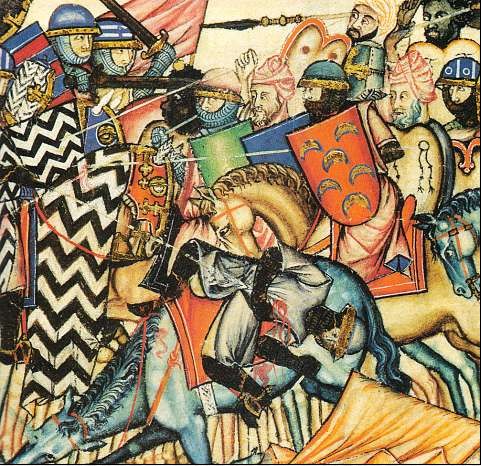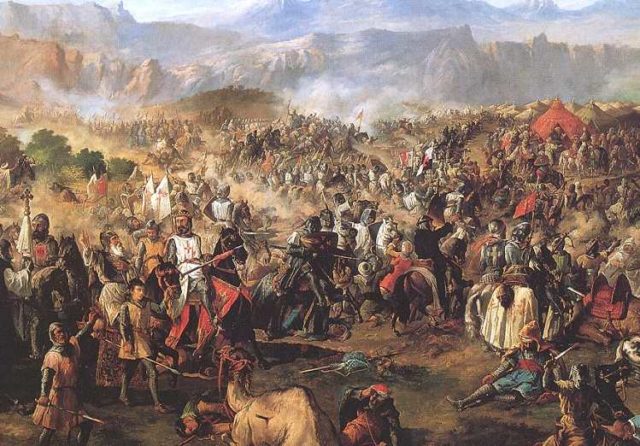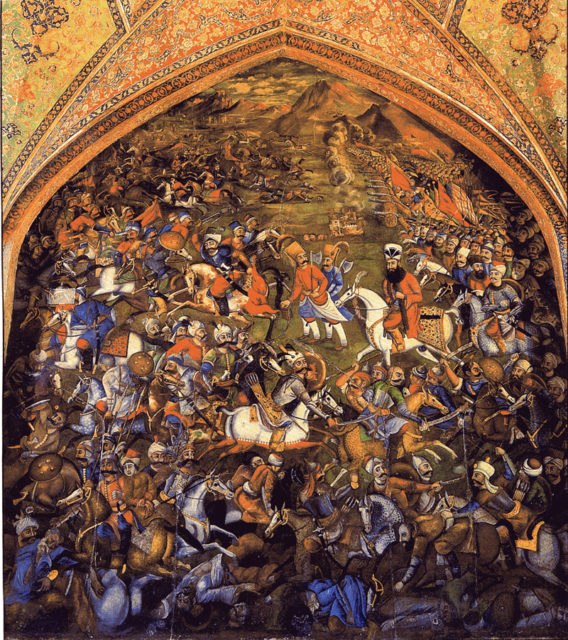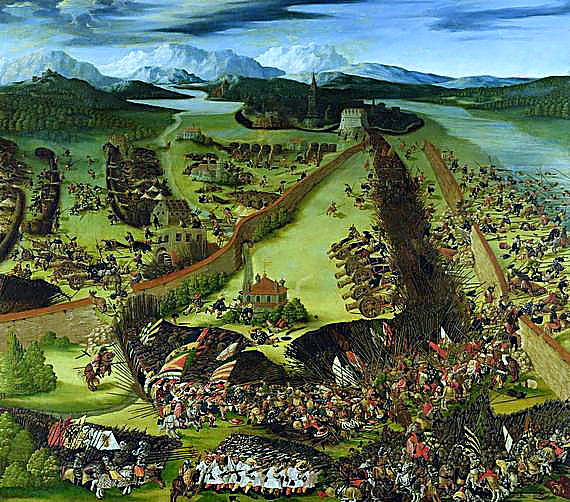The medieval world was scorched by endless warfare for dominance and lands. Going through the pages of history we could pick at least four battles with key significance. Which are the four key victories of the medieval world?
Battle of Toulouse, 721- The Conquest of Western Europe

What happened?
The growing power of the Umayyad Caliphate was a threat like no other for the kingdoms of the Old Continent. The Arab conquest was steadily moving forward and conquered anything in its way.
After the Umayyad successfully raided one of the regions of the Frankish Empire, their leader al-Khawlani went back south to refresh his forces and gather more men. Done with this he headed to Toulouse, the capital of the strongest Dutchy of the France- Aquitaine.
The city of Toulouse was besieged by the army of the Umayyad Caliphate. With the city besieged Duke Odo of Aquitaine managed to escape and started gathering an army. Calling out to his vassals he intended to make a force strong enough to lift the siege. After three months of tireless effort, Odo successfully recruited an army.
His timing was decisive. Duke Odo arrived just when the defenders were about to give up. Duke Odo’s forces attacked the Umayyad horde, initiating a critical tactic. Pretending to withdraw his army after the charge, making them believe he was defeated. The Umayyad army returned to their camp, sure in their victory.
As a result, their awareness was reduced. Using the cover of the night, Odo attacked the sleeping enemy’s camp from all sides. Almost the entire Umayyad army was massacred, just a few managed to escape. Al-Khawlani escaped on the verge of death, only to die from his injuries not long after.
Why is the Battle of Toulouse a key victory of the medieval world?
The devastating defeat the Umayyad forces suffered in Toulouse had a great impact on their expansion. Their appetite for the lands of Aquitaine suddenly disappeared. Just about a decade later King Martel crushed yet another Arab force near Poitiers.
The victory in Toulouse gave that chance for the Western parts of Europe to increase their strength and ready themselves for invasion. The battle was holding a significance for the Umayyads themselves, who commemorated it with sadness every year until the fall of Granada.
The Battle of Las Navas De Tolosa, 1212 – The Spanish Reconquista –

What happened?
The Crusade of Las Navas De Tolosa was the spark of hope for the Spanish Reconquista. A major turning point in the history of the Iberian Peninsula, the Battle was a call for a great union against the powerful Almohads.
The Caliph Al-Nasir’s invasion of the lands of Castile caused the Spanish countries to unite finally and meet the invaders as one powerful force. The grave threat the Almohad invasion represented was met with fierce resistance.
Al-Nasir’s expansion and the fall of numerous cities called for a Crusade. All Christian kingdoms united, and the army included even volunteers from France, together with the Knights of the Order of Santiago.
Marching south, the Crusader army took back some of the conquered cities while heading to meet the Almohads. Initiating a surprise attack on the conquerors gave the Crusaders huge tactical advantage. Although at some point the scales tilted in favor of the Almohads, the battle was turned anyway, It was a triumphant victory for the Crusade, and the Caliph barely escaped with his life.
Why is the Crusade of Las Naval De Tolosa a key victory of the medieval world?
The victory at Las Navas De Tolosa was the event that started the successful reconquest of the Iberian Peninsula. The Almohads went into a decline and were removed from another dynasty. The Mirinds who took their place were not so powerful and did not manage to keep their lands in Andalusia.
At the end of the 15th century, the Almohad forces were finally driven away from the Christian Reconquista.
Battle of Chaldiran, 1514 – Ottoman-Persian Wars

What happened?
This was a battle in modern-day Iran. Nothern Iran was the battlefield where the Safavi leader Ismail I would stand and fight the Ottoman Empire’s forces of Sultan Selim I.
The armies met at Chaldiran. The Safavid forces first started the battle, but the Ottomans did not lose their position. The regrouped forces of the Ottomans opened with artillery fire, destroying the lines of the Safavid forces. The strong assault was devastating for the Persians. Their army was routed and the Shah Ismail himself gravely injured and almost captured. The harem of the Persian ruler was, however, captured, and his wives given out to the subordinates of the Ottoman Sultan as a prize.
Why is the Battle at Chaldiran a key victory of the medieval world?
The defeat of the Persians opened the gate for even more painful and shameful losses. Tabriz, the very capital of the Persian Empire was captured, sacked, and burned. The Persian Shah Ismail I had no other choice but to run southeast. He settled in the Persian city of Isfahan, which was chosen as the new capital, and remained so up until the late 18th century.
With this victory, the Ottomans would solidify their authority as a main power in the Middle East for next 400 centuries. The Ottoman victory was of great importance for the future of Anatolia, Norther Iraq, and Azerbaijan. The Kurdish tribes in Iraq and Azerbaijan made a convention with Selim I.
He gave them autonomy, and they accepted to guard the eastern borders. Furthermore, Selim I had no more obstacles to continue his conquest of Iraq, Iran, Syria, and Egypt.
Battle of Pavia, 1525 – French-Habsburg Wars
What happened?
The French Kingdom was in continuous war with the Habsburg monarchy which controlled the Holy Roman Empire and Spain. Their bloody conflicts for the pieces of land remained in history as the Italian wars. The battle was decisive for the Italian region and Europe’s military history. The victors would solidify their rule for over a century, and would also mean the end of one legendary medieval unit.
The French invested a great deal in equipping their forces, made their army of heavy cavalry, swiss infantry, and artillery the most modernized one in Europe. While their opponent the Habsburg placed their hopes in mercenary forces.
As the French army was headed to the Italian lands on the north, they wanted to regain control over Milano. Taking it, Francois’ next step was to chase out the imperial army of the Habsburgs.
The latter fortified themselves in Pavia. In the late autumn, the city was besieged by the French, but winter was knocking on the door, and garrison grew impatient. In spring a new imperial force was sent to lift the siege, which they did flawlessly.
Attacking the French from behind, the imperial force divided and wiped them out one after another, giving the besieged garrisons opportunity to attack as well. The French king himself was captured and forced to sign a humiliating peace treaty. Also, some the French nobles from the aristocracy fell in the battle.
Why is the Battle of Pavia a key victory of the medieval world?
This battle, although not the end of the Italian conflict, was a decisive victory for the Habsburgs. They not only made France sign the humiliating treaty but also disabled them from effectively initiating anything against the Dynasty. The Habsburg are the new all-powerful force in the Old Continent, a status they would keep for the next century.
